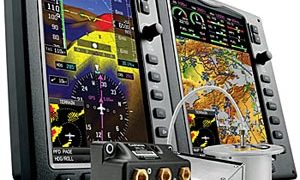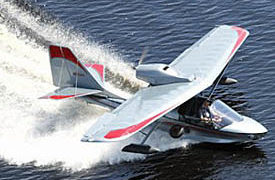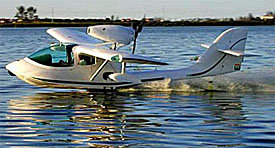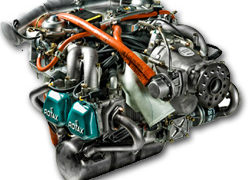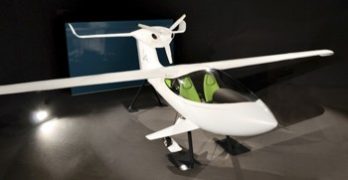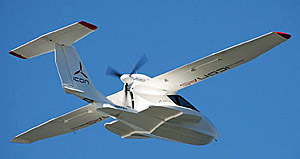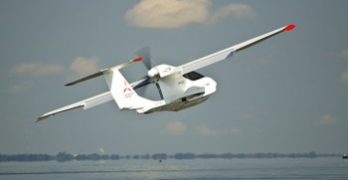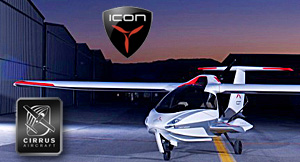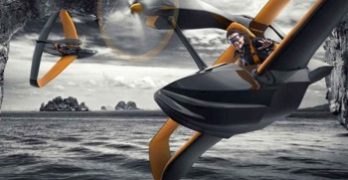Next month, in April 2013, the Light-Sport Aircraft industry celebrates an anniversary. It will be the eighth year since the first Special LSA approval was granted by an FAA Designated Airworthiness Representative in 2005. Evektor‘s Sportstar was first, followed hours later by the Flight Design CT and then an amazing outpouring of innovation now stretching to 131 SLSA models approved. That’s better than four brand new aircraft every quarter for 32 straight quarters; worldwide aviation’s never seen anything like it. Most of the early brand names in the industry were new, at least to Americans. Yet along the way, some famous aviation names joined the party.
We’ve seen entries from Piper, Cirrus, Cessna, Lycoming, Sensenich, and Wipaire Floats plus the major member organizations embraced Light-Sport in their own way. One multibillion dollar company to serve the sport and recreation community has been Garmin.
Search Results for : A5
Not finding exactly what you expected? Try our advanced search option.
Select a manufacturer to go straight to all our content about that manufacturer.
Select an aircraft model to go straight to all our content about that model.
Seaplane Tsunami — Water-Borne Flying Fun
Once upon a time, in the early days of Light-Sport Aircraft, way back in 2006 and 2007, new LSA models were being introduced at the torrid pace of two, three, even four per month. Aviation had no prior design outpouring to compare. The rate of development had to slow — such a pace is not sustainable — and it did. Yet the young industry continued on to the astonishing sum of 131 models and it ain’t over yet. Meanwhile, though, a new tsunami is building within the LSA sector. I’ve written about a wave a new seaplanes and as summer 2013 approaches, a tour of the many choices may help guide interest of seaplane enthusiasts.
Current Seaplanes (distinguished from float-equipped land planes *) include FAA-accepted SLSA models: Mermaid, SeaMax, SeaRey, and Freedom. At present all are being offered and have some measure of U.S.
LSA Seaplane Invasion …Can It Happen?
What’s going on out in the marketplace? More than any time since the launch of Light-Sport Aircraft in 2004, I have not observed such a frenzy of activity for a particular niche, this time for LSA seaplanes. Next season, in 2013, we could see no less than nine entries; three brand new and that count does not include any LSA equipped with floats, possibly adding several more. Yet some major potholes appear in the runway… or perhaps that should be waves sloshing over the bow.
One entry is a return of a LSA seaplane previously seen in the USA as the Freedom S100 (SLSA List #44) yet can it reenter the market without a full FAA audit? See Update at end. A new agency directive with the catchy name 8130.2G CHG 1 may require a FAA visit to Spain but who knows when that might occur, given the likelihood of an FAA budget cut through the political process known as sequestration, part of the so-called “fiscal cliff” the mainstream media drones on about endlessly.
LSA News Wrap — Rotax-Icon-Tecnam-More
Another busy week finished a very active August that has seen high readership… for which we sincerely thank you. Following are some brief news stories in the LSA space.
*** ROTAX “EMERGENCY AD?” Aviation media was all over the Rotax “Emergency AD” story, but is that entirely accurate? Aren’t LSA subject to manufacturer-issued SBs or Service Bulletins rather than Airworthiness Directives, which are normally issued by FAA for certified aircraft? Well, “yes,” said Rotax expert Phil Lockwood. He explained that the matter in question — some fuel lines that need to be replaced — was a result of a vendor change bringing some incorrect components. “Rotax issued a Service Bulletin last spring on this subject,” Phil added. The so-called “emergency AD” was triggered by an EASA issuance primarily for certified Rotax engines in Europe. Rotax BRP is a very careful company that is quick to correct problems and this was something of delayed reaction that again appears to show the certified world may not respond as quickly as the LSA sector.
Pipistrel Able to Deliver Customer LSA Again
Two days ago, Aero-News Network was first to break a news story (“Stupid Fed Trix”) about FAA blocking Pipistrel from the ability to get Airworthiness Certificates for aircraft awaiting customer delivery. The problem was not a new model FAA had never seen. It was for models already in the country and flying with typical LSA approval. The problem? FAA didn’t seem sure where those LSA were made and in the arcane world of federal government approval, a LSA cannot be built in a country where FAA does not have an understanding with local aviation authorities called the Bilateral Safety Agreement (BSA). Bored yet?
*** Maybe… but if you were one of the customers who paid for an aircraft that you could not fly, you wouldn’t be bored. You’d be mighty unhappy. You paid for it. The aircraft has no problems except for the BSA issue (which cannot make an existing aircraft any safer).
Financing The Long Haul
This has been a tough semi-decade for people in the Light Sport industry with big ideas. And for people everywhere with this kind of thinking: ”Hey, let’s throw a few million bucks at this mega-concept and see if it changes the world!” *** Cessna’s Skycatcher endured a couple non-recoverable spins and parachute deployments in its intensive test program en route to earning SLSA certification. The process delayed deliveries by a couple years and no doubt the setbacks cost the aviation giant an uncomfortable percentage of its initial 1,000 pre-orders (Cessna has never divulged just how many orders it lost). *** Not long after the LSA category was made official in 2004, Icon Aircraft writ its name in stars across the promotional universe with one after another high-profile, flashy presentations at major air shows. Its beautiful, all-composite A5 amphibian also garnered a lot of pre-order support from a new customer base dazzled by the A5’s heavily-pitched fun-in-sun, jet-ski-like utility and ease of operation.
Discussion: LSA – Primary Category – Part 23
Since AirVenture 2012, I’ve been part of several discussions about the way — and reasons why — aircraft become certified. Sound boring? Yes and no. One way this might get your interest is to consider if Icon could join Cessna in going Primary Category instead of LSA. Disclaimer: I have no info about any such decision from Icon; this is merely a discussion. Perhaps even more to the point is the price of airplanes based on their certification cost.
*** COST Some informed estimates from knowledgeable persons suggests the cost of taking a fully designed, tested, and otherwise ready LSA through the full process of ASTM approval including the manufacturing process may be the cost of one airplane at retail. In other words, it might cost $125-150,000 to “certificate” a new LSA, after all design work and testing has been done. A weight shift trike might cost $80,000 as ASTM standards are somewhat simpler for those aircraft types.
Birds of a Composite Feather…
Top General Aviation manufacturer *** Cirrus Aircraft, which makes the Cirrus line of four-seat, all-composite aircraft, just announced it’s partnering with another composite company, one that’s had its share of delays in getting to market: Icon Aircraft. *** The Icon A5, a sleek, highly-promoted amphibian SLSA, has gathered several hundred orders although the company, formed in 2005, is still in development testing. Its latest production estimate is another year off. *** Cirrus said it expects to add up to 60 jobs at its Grand Forks, N.D., plant as it manufactures a large portion of the A5. *** ICON says it sought the partnership with Cirrus “because of its reputation for quality composite airframes in its SR-20 and SR-22 planes.” *** For its part, Cirrus, which originally planned to rebadge and market a sleek, European-built SLSA of its own back in the beginning of the Light Sport era (2004), says the partnership will give it a horse in the new category.
Cirrus Returning to LSA? Well, Yes… for Icon
Icon Aircraft and Cirrus Aircraft announced a deal for the general aviation composite aircraft producer to build parts of the Icon A5 and the news introduced dates for the A5 to come to market.
*** Several years ago I traveled to Cirrus’ Duluth, Minnesota plant in the company of the Icon top leaders, including CEO Kirk Hawkins. In those days, Cirrus was seeking info to make decisions about their since-dropped LSA project called the SRS (photo). The Icon fellows were obviously impressed and the trip subsequently paid off.
*** “Cirrus has a global reputation for producing truly outstanding composite aircraft structures,” said Hawkins. “Their extensive experience, specifically in composite sandwich-production techniques, makes them an ideal production partner for Icon.” Cirrus has built more than 4,000 of its SR models. Returning the admiration, Cirrus CEO Dale Klapmeier said, “The Icon A5 is certainly the most innovative LSA on the market.” He added, “We believe that Light-Sport Aircraft and Sport Pilots are critically important to the growth and future of aviation.”
*** Like most airframe makers these days, Cirrus may not be using all its capacity.
Flynano Makes First Flight!
This is pretty cool, I have to say: a flying…what, waterbike? Winged pontoon? Powered box kite? Here’s the home page for *** Flynano: and doesn’t this supremely giddy pilot in the illustration remind you of U2′s Bono? Hmmm…backer? Person of Interest? Is Lindsay Lohan going to buy one? Stay tuned… *** A year ago, I wrote about these enterprising and clever folks behind the Flynano project. They made a (cue: drum roll) big splash at Europe’s 2011 Aero show when they introduced the mockup. Frankly, I confess to a tad of private skepticism: it looked like a long shot to ever fly, let alone actually come to market. That’s why I try to curb my public expressions of criticism: it’s so easy to be proven wrong. *** I was concerned that although the boxwing concept — a joined upper/lower wing, tailless design — has been proven, (and even marketed in Europe as the Sunny Boxwing, see video at bottom), the Flynano could easily have been just another blue-sky, briefly-ballyhooed project, like so many that have come down the pike (do the name Moeller Aircar ring a familiar note?) *** Yet how cool indeed ‘twould be if this easy-fly skimmer-bug of a recreational aircraft that only operates from the water could actually fly?
- « Previous Page
- 1
- …
- 12
- 13
- 14
- 15
- 16
- …
- 18
- Next Page »


